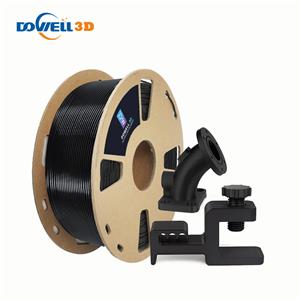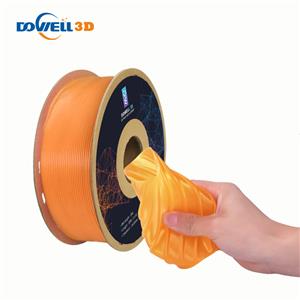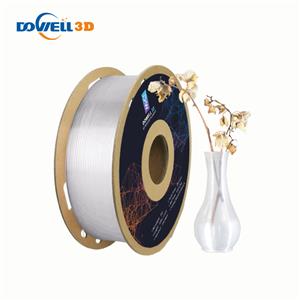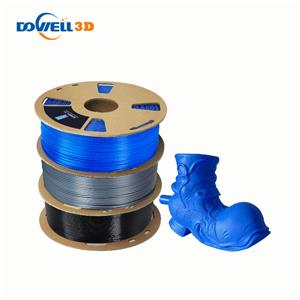All you need to know about PLA 3D Printing
Everything you need to know about PLA 3D Printing
Before you get started with PLA 3D Printing, we’ve compiled some of the basic information you’ll need to know. Read on to learn the advantages, disadvantages, history and applications of PLA 3D printing
When it comes to desktop 3D printing, one material is synonymous with the mass adoption by hobbyists and educators, as well as professionals who are just getting started. That material is PLA and its acclaim comes in large part from its ease of use when compared to other materials.
Through this article, we intend to share everything you should know about printing with PLA, the most widely used 3D printing material. On account of its benefits, PLA is considered a favorite choice for many hobbyists, enthusiasts, and students.

UNDERSTANDING PLA AS A MATERIAL
Polylactic Acid or PLA was discovered by the scientist Wallace Corothers in the 1920s. However, serious applications for PLA didn’t arrive until the 1960s when it was used as a material for tissue replacement. It then gradually found recognition and gained usage in many modern applications.
Chemical Composition
PLA is a biodegradable thermoplastic polymer obtained from resources like corn starch, or sugarcane. PLA holds the distinction of being the highest consumed bioplastic in the world.
Its bio-degrading property is very much desirable in many products such as disposable cups, glasses, bottles, tea bags, and mulch films. But this property also limits its use in engineering applications as it is not suitable for long-term usage.
Other notable advantages of PLA include its low energy consumption during production, it generates around 68% fewer greenhouse gases and it does not emit toxic fumes.
In terms of its properties, PLA is stable and can produce consistent performance over a long duration. It is extremely robust for in-system applications and showcases characteristics similar to polyethylene (PE), polypropylene (PP), or polystyrene (PS).
Is PLA Food Safe?
Since PLA is manufactured from biodegradable materials, it is generally considered as food safe. But it is important to note that the material moves through an injection molding machine during its production cycle, and if the same machine is used for any other material then it cannot be considered as a purely food-safe material.
In the case of 3D printing, if the raw material is considered food-safe but flows through a brass nozzle during the printing process, the material becomes contaminated.
So, it is better to be skeptical about its food safety and take necessary precautions if the material is to be used for products that come in direct contact with food.
PLA 3D PRINTING
Since PLA is manufactured from biodegradable materials, it is generally considered as food safe. But it is important to note that the material moves through an injection molding machine during its production cycle, and if the same machine is used for any other material then it cannot be considered as a purely food-safe material.
In the case of 3D printing, if the raw material is considered food-safe but flows through a brass nozzle during the printing process, the material becomes contaminated.
So, it is better to be skeptical about its food safety and take necessary precautions if the material is to be used for products that come in direct contact with food.
ADVANTAGES
➜ Easy to Print: PLA’s ability to heat and cool without shrinking makes it tremendously easy to print when compared to various other materials.
➜ Budget Friendly: 3D printing with PLA is arguably the most cost-effective
➜ Classroom and Office Friendly: PLA is a nontoxic corn-based, biodegradable material and is considered safe to use in offices and classrooms
➜ Good part stiffness: PLA is stiff meaning that it will maintain its form up until its breaking point which is important in applications such as inspection gauges.
➜ Biodegradable: PLA is a corn-based plastic and will break down over time.
DISADVANTAGES
➜ Catastrophic Failure Under Pressure: While PLA has respectable strength and stiffness characteristics, it has a tendency to be rather brittle and can fracture violently into shards when it reaches its limit.
➜ Hygroscopic: PLA’s tendency to absorb moisture from the air can actually make it difficult to print in high humidity situations.
➜ Low heat-resistance: PLA has a fairly low temperature at which it will begin to warp or soften. This could make it difficult to use for certain testing applications or even in the instance of leaving a part in your car on a hot summer day.
➜ Biodegradable: Depending on what you’re trying to do with your 3D print, the fact that it breaks down over time could be viewed as a negative. If you want to produce a lasting end-use part, 3D printing with PLA might not be the best choice.




